










|


|

Renderers
EQUINOX-3D has had the first interactive ray-tracer in a 3D modeling application and it's still the only one with a fully integrated ray-tracer.
See below and check out the Image gallery and the screenshots.
Main features:
- Multi-threading (it uses all the cores on your CPUs).
- GPU ray-tracer in the works (I have a working prototype, but it uses CUDA, so it only works on NVidia GPUs. The new one will use OpenCL).
All renderers are fully integrated in the user interface, meaning:
- Any window can use any renderer. No need to open a separate window for the ray-tracer (you can, if you need to).
- No load time. When you edit your models, they redraw instantly, even in a ray-traced window!
Note the wireframe and 3D controls overlaid on the ray-traced image:
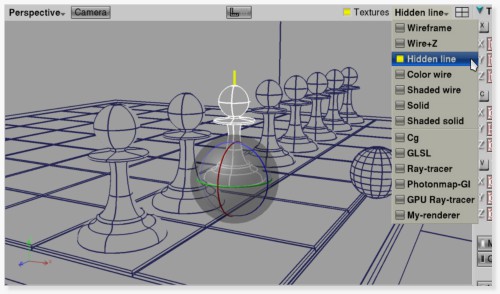 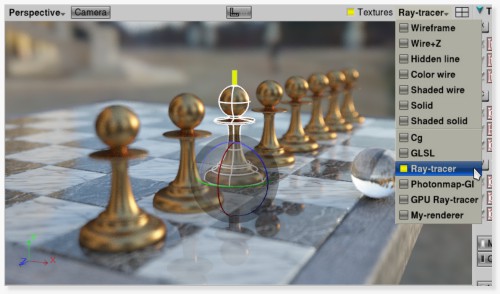
You can also create your own renderer as a plugin, or even a whole video game and run it inside any EQUINOX-3D window.
You can do full editing with the interactive ray-tracer (not just move the camera interactively, as in other applications).
- select and unselect things
- edit 3D models.
- move objects, the camera, lights, change materials etc.
Thanks to intelligent, selective updates, Spline editing, selecting / unselecting, exposure changes and so on, are just as fast on the ray-traced view as on any other one!
-
Interactive option for the main render window:
In addition to the regular 3D windows, there is also a traditional, separate window for rendering movies, or images larger than the screen. You can also make this window interactive.
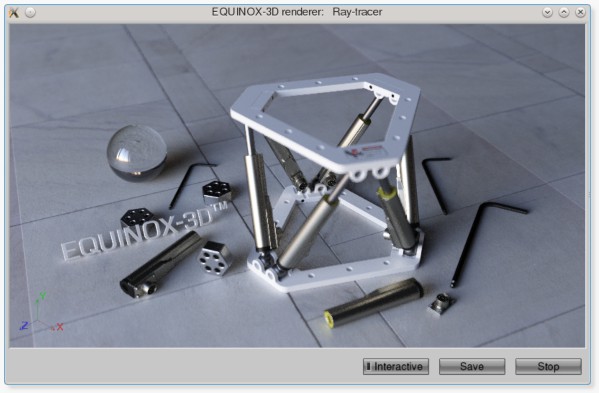
- Depth-of-field and motion blur. Yes, this is an EQUINOX-3D rendering. You can see the movie here
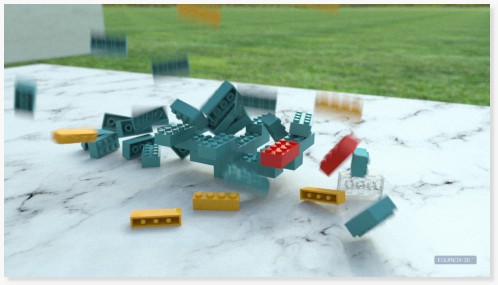 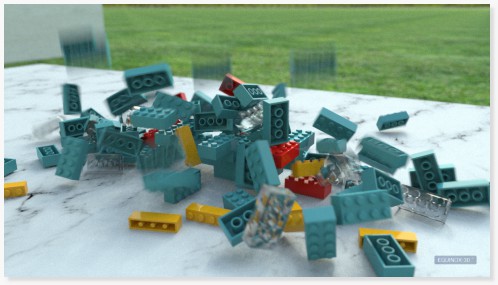
- Global illumination / indirect light.
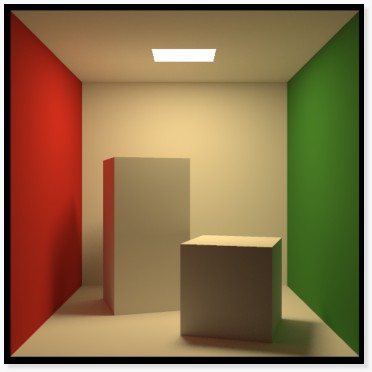
- Reflected and transmitted caustics.
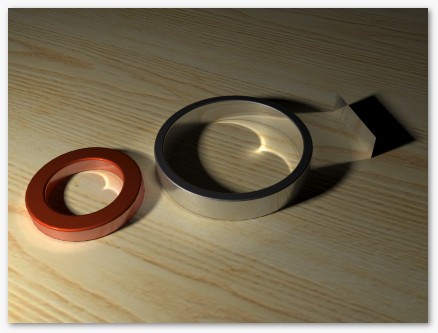 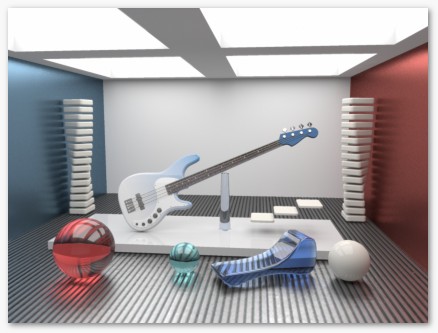
-
Powerful and fast cross-renderer shader interface (ray-tracer, Cg etc.).
Per-pixel normals, geometric tangents, texture-space tangents, pre-sampled/shadow-tested area light samples etc. are easily accesible by shaders.
Source code examples included:
- Phong with Fresnel-modulated reflectivity and specular highlight
- Anisotropic shader

Minimal effort needed to implement a shader for both the ray-tracer, the Cg renderer etc. (e.g. the Cg framework automatically generates Cg shaders from a minimal template).
Identical look for Cg and ray-tracer outputs (within the limitations of graphics hardware):
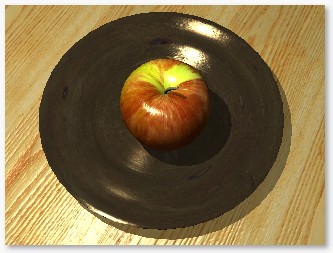
Ray-tracer
|
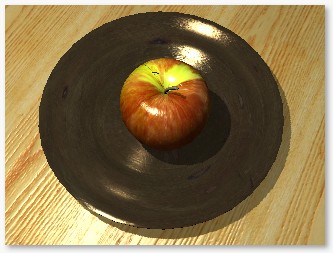
Cg
|
- Multi-texturing
For example, you can have separate textures for the ambient, reflective etc. colors, or for any parameter of a custom shader:

- Bump / normal-mapping
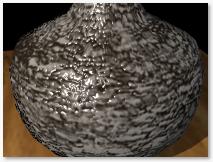 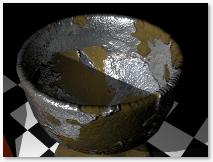 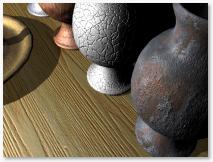
-
Area lights
Any 3D object can be a light source and area lights cast correct soft shadows:
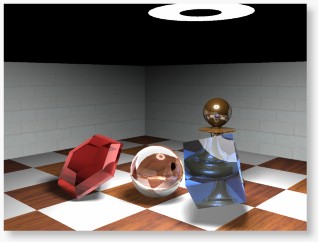
-
Programmable texture-mappers
In addition to the built-in mappers (planar, UV, cylindrical etc.) you can write your own mapper that fits a particular object best.
-
Direct support for mirror-ball photograps and angle maps as textures/environment maps
-
Textured area lights and high dynamic range texture support
32-bit floating-point values per R, G, B, A channels
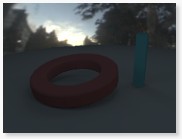 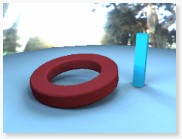
-
Colored reflections and refractions
-
Volumetric absorption (e.g. 'muddy water' effect)
-
Anti-aliasing with many options
-
Customizable progressive refinement:
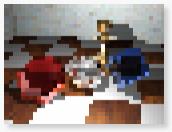 -> ->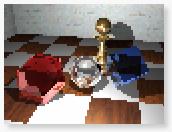 -> ->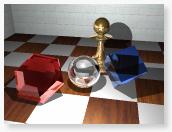
-
Multiple lens types:
Perspective, Fish-eye, rear-view fish-eye, Cylindrical, Panorama and Angle-map
(great for creating reflection-maps and illumination-maps)
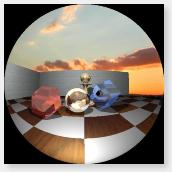
-
High Dynamic Range (HDR) image support:
Allows you to save the rendered image with its full color range, as 32-bit floating-point values per R, G, B, A channels.
© 1992-2017 By Gabor Nagy
|















